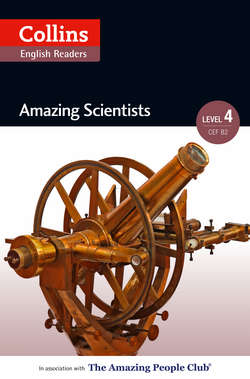| 1745 | Alessandro Giuseppe Antonio Anastasio Volta was born on 18th February in Como, Italy. |
| 1752 | Alessandro’s father died. |
| 1760 | He enrolled in the school in Como to study natural philosophy. Alessandro also studied many languages including Latin, French, English, Dutch, Spanish, Russian and Greek. |
| 1763 | Alessandro was interested in physics and chemistry. He began to write to the Abbé Jean-Antoine Nollet, in Paris, and later to Professor Giovanni Battista Beccaria, at the University of Turin, on the subject of electricity. |
| 1769 | He published De vi attractive ignis electrici (On the attractive force of electric fire). |
| 1774 | Alessandro was appointed Director and then Professor of Physics at the Royal School, Como, Italy. The following year, he improved an invention that produced a static electric charge called the electrophorus. |
| 1776–1778 | Alessandro focused his study on the chemistry of gases. He discovered methane. He also studied electrical potential and charge, from which the Volta Lamp was developed. |
| 1779 | He became Professor of Experimental Physics at the University of Pavia. Alessandro also travelled to Switzerland, which was the first of many trips. |
| 1781 | Alessandro lectured throughout Switzerland, Belgium, Germany, Holland, France and England. |
| 1783 | He travelled to Vienna and met with Emperor Joseph II. |
| 1785 | Alessandro became the Rector at the University of Pavia. |
| 1791 | Luigi Galvani’s reports on experiments with ‘animal electricity’ were published. Alessandro carried out experiments of his own, which led to his theory that animal tissue was not required to conduct electricity. This would later be proven by his development of the battery. |
| 1794 | Alessandro was awarded the Copley Medal by the Royal Society of London for his work in chemistry. Alessandro married Teresa Peregrini, who came from a wealthy family in Como. They later had three sons, one of whom died aged 18. |
| 1799 | After completing his own experiments, Alessandro disagreed with the findings of Luigi Galvani. He developed the first electric battery, known as the Voltaic Pile. Alessandro also discovered the law of electromotive forces. |
| 1800 | He wrote to Sir Joseph Banks of the Royal Society of London and described his findings. That led to further experiments and development in electricity and batteries. |
| 1801 | Alessandro travelled to Paris and lectured at the Institut National de France. |
| 1805–1809 | He was created a Knight of the Legion of Honour, Knight of the Iron Crown and Senator of the Realm. |
| 1810 | Napoleon Bonaparte granted Alessandro the title of Count, to honour his work in the field of electricity. |
| 1813 | Alessandro stopped teaching. |
| 1846 | The following year, the Royal Society awarded him the Rumford Medal in recognition of his scientific work. |
| 1815 | The Emperor of Austria named Alessandro Professor of Philosophy at the University of Padua. Later, many of his works were published in Florence. |
| 1819 | He retired to his estate in Como, Italy. |
| 1827 | Alessandro died aged 82, in Como, Italy. The important electrical unit, the volt, was named in Alessandro’s honour in 1881. |
